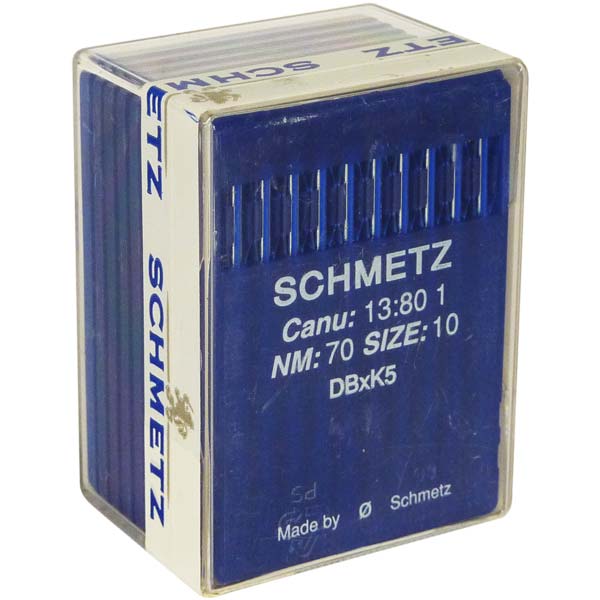
When should I use a sharp point needle in embroidery?
In machine embroidery, the choice between a sharp point needle and a ballpoint needle is determined by the type of fabric you’re embroidering. The wrong needle can cause a variety of problems, including skipped stitches, thread breaks, and damage to the fabric.
When to Use a Sharp Point Needle
A sharp point needle has a very fine, acute tip that is designed to cleanly pierce through tightly woven fabric fibers. This is what you should use for most woven materials.
Tightly Woven Fabrics: This is the primary use for sharp needles. They are ideal for fabrics like cotton, linen, canvas, denim, twill, and broadcloth. The sharp point ensures a clean hole is created for the thread, which helps to produce crisp, well-defined embroidery.
Heavy and Dense Fabrics: When embroidering on materials like hats, canvas bags, or multiple layers of fabric and stabilizer, a sharp needle is necessary to penetrate the density of the material without bending or breaking.
Embroidering through Foam: If you are using a 3D puff embroidery technique that involves stitching over a layer of foam, a sharp needle is essential to pierce through the foam and create a raised, three-dimensional effect.
Leather and Vinyl: Sharp needles are the correct choice for non-stretch materials like leather and vinyl. They cleanly puncture the surface, preventing the fabric from tearing or stretching, which would happen with a ballpoint needle.
Fine Details and Small Lettering: Because a sharp needle creates a precise puncture, it’s often the best choice for small, intricate designs or very small lettering where stitch clarity is paramount.
When to Use a Ballpoint Needle
In contrast, a ballpoint needle has a slightly rounded tip that is designed to push fabric fibers apart rather than cutting them.
Knit Fabrics: This is the most important use for a ballpoint needle. Knit fabrics (like t-shirts, sweatshirts, fleece, and polo shirts) are made of interlocking loops. A sharp needle can cut these loops, leading to skipped stitches, thread breaks, or permanent holes and runs in the fabric. A ballpoint needle gently nudges the fibers aside, preventing damage.
Stretchy and Loosely Woven Fabrics: Any fabric that has a significant amount of stretch, such as spandex or Lycra blends, will benefit from a ballpoint needle. The needle’s rounded tip helps it navigate the stretchy fibers without distorting the material.
In summary, the key distinction is the fabric’s construction:
Woven fabrics = Sharp needle.
Knit or stretchy fabrics = Ballpoint needle.
It’s a good practice to keep a variety of both sharp and ballpoint needles in different sizes on hand. Always match the needle size to the weight of your fabric and the type of thread you’re using for the best results.

